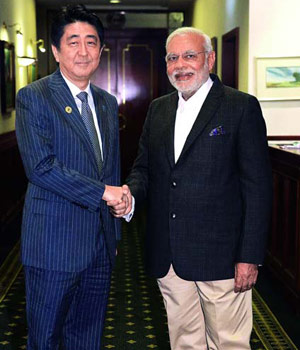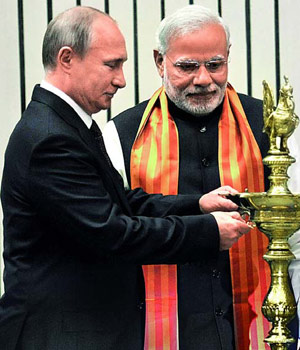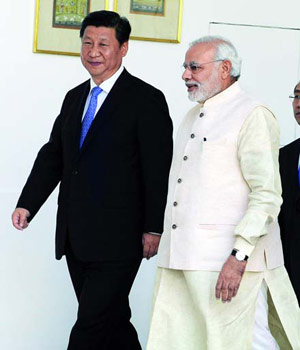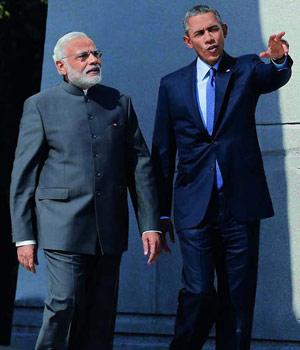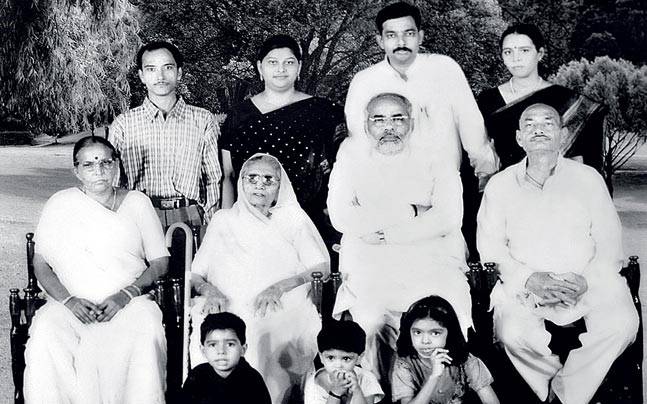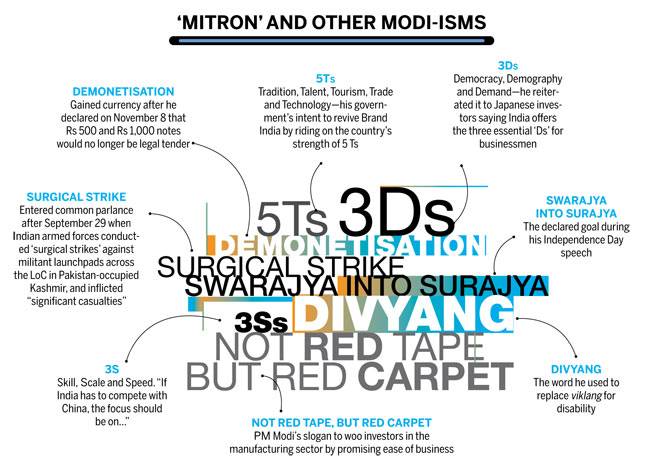Narendra Modi
(→Personal life) |
|||
| Line 85: | Line 85: | ||
[[File: modi2.jpg| Graphic credits: [http://indiatoday.intoday.in/story/narendra-modi-humble-beginnings-early-life-newsmaker/1/408679.html ''India Today'']|frame|500px]] | [[File: modi2.jpg| Graphic credits: [http://indiatoday.intoday.in/story/narendra-modi-humble-beginnings-early-life-newsmaker/1/408679.html ''India Today'']|frame|500px]] | ||
[[File: modi3.jpg| Graphic credits: [http://indiatoday.intoday.in/story/narendra-modi-humble-beginnings-early-life-newsmaker/1/408679.html ''India Today'']|frame|500px]] | [[File: modi3.jpg| Graphic credits: [http://indiatoday.intoday.in/story/narendra-modi-humble-beginnings-early-life-newsmaker/1/408679.html ''India Today'']|frame|500px]] | ||
| − | + | [[File: Modi family , India Today , 2003 .jpg| Modi family , India Today , 2003 |frame|500px]] | |
''' It's the life lessons that he picked up as a man of humble beginnings that will keep Prime Minister Narendra Modi in good stead ''' | ''' It's the life lessons that he picked up as a man of humble beginnings that will keep Prime Minister Narendra Modi in good stead ''' | ||
| Line 118: | Line 118: | ||
With the era of Modi upon us, there will be many hypotheses and expositions on what the Prime Minister's motivations are, and how they have been derived. Be that as it may, it cannot be denied that our Newsmaker of 2014 has led a simple life that could not have been less ordinary. | With the era of Modi upon us, there will be many hypotheses and expositions on what the Prime Minister's motivations are, and how they have been derived. Be that as it may, it cannot be denied that our Newsmaker of 2014 has led a simple life that could not have been less ordinary. | ||
| + | |||
=2006-11: Economic links with China [as CM]= | =2006-11: Economic links with China [as CM]= | ||
''' Modi found China when blocked by great visa wall ''' | ''' Modi found China when blocked by great visa wall ''' | ||
Revision as of 17:23, 16 July 2017
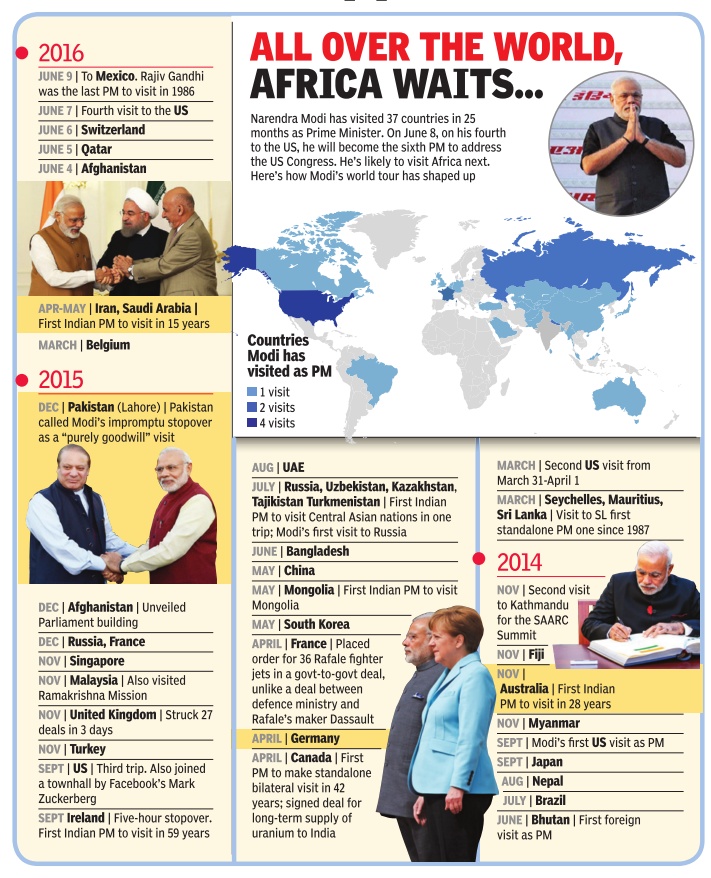
This is a collection of articles archived for the excellence of their content. |
Contents |
A profile
Rajdeep Sardesai
December 25, 2014
India's most powerful prime minister in decades,Narendra Modi has become the focal point of a young nation's aspiration for a better tomorrow
In 2014, Narendra Modi was literally everywhere. On the campaign trail, with clenched fist and self-proclaimed 56-inch chest, Modi was the defining symbol of an India hankering to be liberated from the effete elitist UPA, roaring out a near universal echo against silver spoon-fed dynasts and ancien regime aristocrats. Ranging around with furious energy from Amethi to Chennai, from Bastar to Kerala, he rode tidal waves of expectation, each of his appearances a call to overthrow the old order, the up-by-his bootstraps "chaiwallah" flaunting his humble origins and perfect wardrobe as if to say, "If I can, you can too." Class warrior against the Oxbridge elite yet capitalist-friendly to desi business, Hindutva champion yet armed with modern high-tech media, the publicly endorsed emblem of a globalising India with a triumphant eye turned towards the Vedic Age.
Indeed, power in the country now flows from a designer kurta that was once made in Gujarat. Recently, on a chilly December evening, Rashtrapati Bhavan held an event to celebrate the construction of a new wing of the Ceremonial Hall. The Lutyens power elite were in attendance: ministers, governors, service chiefs, and the Rashtrapati himself. Dot on the appointed time, in walked the Prime Minister in his trademark salwar kurta, not a hair out of place. The chatter in the room shrank sharply to pindrop silence, as gathered VIPs jostled to catch the eye of the Supreme Leader. In 2014, Modi has become truly larger than life. Armed with a massive majority for the first time after 25 years of coalition governments, he's arguably the most powerful PM India has seen since Indira Gandhi in the 1970s.
It wasn't always quite like this. In 2002, Modi made it to the cover of this magazine for the first time. He was then labelled a "Master Divider", a politician who had presided over the terrible Gujarat communal violence that had left more than 1,000 people dead. He had become a sharply polarising figure: to his critics, he was a Hitler-like despot, someone who had knowingly failed to stop the killing of innocent Muslims. To his supporters, he was a 'Hindu Hriday Samrat', a macho leader who had protected the majority community in the aftermath of the Godhra train burning in which 56 kar sevaks were killed. The Congress leadership called him a "maut ka saudagar" (merchant of death); his flock called him "Gujarat ka sher" (lion of Gujarat). Never before has an individual so starkly divided public opinion.
Turn the clock a little further back. It's the 1990s and Modi is struggling to make his way up the political ladder. In a slowly rising BJP, clawing its way up to challenge Congress hegemony, he wasn't even a first among equals among his party's Generation Next. There was Pramod Mahajan, the suave man Friday and strategist for then prime minister Atal Bihari Vajpayee. Sushma Swaraj was an electrifying campaigner while the sagacious Govindacharya was party ideologue. As a pracharak who had never fought an election. He was neatly attired even then, was an effective party spokesperson on television, and had shown superior organisational skills during the yatras of L.K. Advani and Murli Manohar Joshi. But he never was in the front row of the BJP's potential successors to the Vajpayee-Advani duo. What he did possess though was an unshakeable self-belief, a dogged conviction that he was destined for greater things. There was a single-mindedness of purpose: he was a loyal karyakarta, unwaveringly committed to the growth of the BJP, but he was also fiercely individualistic, the ruthless practitioner of realpolitik who would not hesitate to sideline a political rival.
If 2002 and its immediate aftermath revealed a darker side of the Modi persona as the unflinching flag-bearer of divisive Hindutva politics, the years that followed showed another side to his image. From Hindutva icon to governance guru, Modi crafted a makeover that was deliberate and strategic, but also the result of hard work and a constant quest for self-improvement. When he took charge as Gujarat CM in October 2001, he self-confessedly had never sat in a government office or worked on government files. But he was determined to succeed. He built a reputation as a "karmayogi" politician who could work with the bureaucracy in effectively micro-managing government programmes: 24x7 power, girls education, irrigation schemes. Modi harnessed the state administration into an effective project-driven machine under his leadership.
There were, in a sense, two turning points in Modi's political career. The first was, undoubtedly, the train burning in Godhra and the riots that followed, where he acquired a distinct political identity by refusing to appear remorseful or apologetic for the state's administrative failure. The second defining moment came on October 7, 2008 when the Tata group announced it would set up a Nano plant in Sanand in Gujarat. The decision to move the plant from Bengal to Gujarat gave Modi what 2002 or election triumphs could never give him-credibility as a trustworthy administrator.
It was at this point that Modi's ambitions began to soar well beyond Gujarat. The riots had left him politically isolated; Tata's vote of confidence, recognition from a well-respected corporate citizen, gave him the self-confidence that the tide had turned. He unleashed a public relations blitz positioning himself as a politician committed to good governance, as a leader who was incorruptible and who had driven a "Gujarat model" of high growth and robust infrastructure. The Gujarat model and the cult of Modi would henceforth be inseparable.
The was now pitching himself as the icon of what he described as the "neo-middle" class. This "neo-middle class" was Modi's answer to the Congress's "aam admi" and would, eventually, form the core of his appeal ahead of the 2014 elections. Modi defined this constituency as the "aspirational" India, the India restless for a better life and upward mobility, a class which was, ironically enough, a beneficiary of the great economic transformation triggered in 1991 by the Narasimha Rao-Manmohan Singh dispensation. Singh changed the economy but didn't quite understand the political upheaval it unleashed. Modi, in fact, grasped the politics created by the Great Change of '91 better than the Congress did.
Today, liberalisation has created a generation of young Indians for whom wealth creation and social and material advancement have become the fundamental markers of the good life, a mindset sharply at odds with their licence-permit raj-era parents and grandparents whose ambitions may have centred around government jobs and academic qualifications. This class-socially conservative on religious identity and cultural roots yet pushing towards economic liberalism and a relentless focus on growth-was a potential catchment area for an avowedly right-wing party which in the quest for newer voters had started to embellish its Hindu roots and aggressive nationalism with the promise of good governance.
To this class, in a rapidly changing and urbanising India, Modi was offering, quite simply, hope, as symbolised in his election promise of "achche din aayenge". Not surprisingly, the highest support for the BJP in the 2014 elections came from "young" Indians and first-time voters: a CSDS election study shows that as many as 42 per cent Indians in the age group of 18 to 25 wanted Modi as their PM as against just 16 per cent who wanted Rahul Gandhi.
It is one of the more fascinating features of the 2014 elections that the 64-year-old leader had a higher rating among younger voters than his prime opponent who was 20 years younger. Modi appeared to connect with the young, constantly communicating with them, be it while addressing town hall meetings in college campuses or through his crack communications team that focused on youthful social media sites such as Twitter and Facebook. Rahul, of whom it could be said that he never missed an opportunity to miss an opportunity, doesn't even have a Facebook or Twitter account.
It isn't just Rahul to whom Modi should send thank you cards this new year for assisting in his "Mission 272" project. He should certainly send a thank you card to Manmohan Singh. The former prime minister, Sonia Gandhi's appointed wazir, was the soft-spoken scholar, hopelessly at sea, surrounded by a charged media, demanding citizenry and fierce calls to accountability. The gentle Sardar retreated into prolonged silences in the face of mounting charges of corruption against his ministers, giving the glaring impression of an absentee PM who had surrendered the executive space. In Uttar Pradesh, Akhilesh Yadav was shown up to be a political novice, struggling to handle the complexity of India's most populous state. In the other key state of Maharashtra, Ajit Pawar with his infamous "let the farmers urinate in dams" remark was seen to typify the moral bankruptcy of a ruling clique which was now being labelled as the "nationalist corrupt party". Mani Shankar Aiyar, with his chaiwallah statement, only scored one of the Congress's biggest self-goals, a sneeringly condescending remark which enabled the BJP's PM candidate to go to town with a contrast between his own self-made achievements with the privileges of an entitled born-to-rule class.
There should also be a thank you note sent to the media, a large section of which became cheerleaders of the Modi juggernaut. Modi is a made-for-TV politician: he is a terrific orator, has a narcissistic love for the camera, and an uncanny knack to know what will make "news". In a soundbite-driven public discourse, Modi used the media, and television in particular, to position himself as a strong, bubbling-with-ideas leader who would rid the country of sloth and corruption. For the media, Modi was TRP (television rating points) and it seemed like we were in a permanent embrace with the BJP mascot, his images beaming out of every media outlet.
The campaign itself was quite brilliant: it used a deadly mix of media, money and technology to literally shock and awe the opposition. Modi in 3D, for example, showed how high-end technology could be used to spread the message of Modi Everywhere; a missed call and an SMS showed how the cell phone could be tellingly used to build a volunteer base; a video rath beamed out to 'media dark' villages in UP and Bihar and bridged the rural-urban divide. Nor was it a one-man show.
And yet, truthfully, the media did not create the Modi wave as much as simply ride on it. The "wave" (which Shah described as a "tsunami" or "tsunamo") was created by a political environment in which low growth, rising inflation, big-ticket corruption had bred a sense of negativism, even defeatism in the minds of voters. The voter was looking for an Arnold Schwarznegger-like Terminator who would offer instant solutions to a nation's problems.
A post-election study showed that 27 per cent or one in every four of those who voted for the BJP said they did so only because of Modi. Given the low morale in the Congress, the BJP would probably have been the number one party in any case but it was the Modi factor that brought in the incremental vote that pushed the party into the seemingly unthinkable territory of a majority on its own. He was, as a senior Congressman conceded, "a leader at the right time, at the right place, in the right context".
On May 26, 2014, Narendra Damodardas Modi was sworn in as India's fifteenth prime minister, the chief executive of the country's first unabashed Hindu nationalist government. This wasn't an unwieldy coalition in the Vajpayee-led NDA mould; NDA 2 was a BJP government where allies, even long-standing ones such as the Shiv Sena, had to be completely subservient to the BJP leadership. The swearing-in ceremony itself had a quintessential Modi touch. It wasn't held in the conventional Durbar Hall but in the forecourt of Rashtrapati Bhavan: a ceremony aimed to announce the arrival of the "outsider" and the new Delhi durbar.
Modi's always been an excellent impresario: his swearing-in too was a remarkably well-crafted event. The presence of the leaders of SAARC countries for the first time, including Pakistani PM Nawaz Sharif, was again designed to create a stir and project the new prime minister as a putative statesman. Apparently, Ministry of External Affairs officials didn't know about the plan until the very last moment. In typical Modi style, he wanted to shake up the establishment. He takes pride in his "outsider" image, someone who doesn't want to be chained by the protocol and rules of Lutyens' Delhi, someone who is so strikingly singular that he didn't even invite his family for the swearing-in. By contrast, corporates, film stars, even his old Hindutva comrades such as Sadhvi Ritambhara were in attendance. "Mr Modi isn't going to decide his invitations based on traditional definitions of political correctness," is how one of his aides described the invitee list.
He played the showman role again in the US, turning Madison Square Garden into an NRI lovefest; he even dropped in to a music festival in Central Park and rubbed shoulders with Hollywood hero Hugh Jackman and greeted the crowd with a "may the force be with you", the Star Wars-style, rather quaint 1970s chant. The US may have denied him a visa for years in the aftermath of the riots, but Modi wasn't letting that come in the way of taking a stab at becoming a global leader.
Modi's penchant is for headline-grabbing one-liners at prime time (for example, his anti-corruption slogan 'na khaoonga, na khane doonga'); he likes to identify himself with inspirational figures (Sardar Patel one day, Vivekananda the next) and prefers to market simple but salient ideas that he thinks will resonate with a larger audience. His Independence Day speech was a performance more than just a traditional address to the nation. He promised to abolish the Planning Commission and made toilet building his new mission. "What kind of PM stands at Red Fort and talks about toilet building?" he asked with a rhetorical flourish. Swachh Bharat, a concept that he formally launched on Mahatma Gandhi's birthday, is a campaign to spread the message of cleanliness.
Symbols and messages come easily to Modi, even though a more classical right-wing government would probably have opted for incentives rather than for social engineering of the Swachh Bharat kind, for a lesser role for the government than for an overweening position for the PMO. Is Modi a believer in right-wing market-friendly economics or is he in fact only delivering a more efficient UPA? That question hangs in the air. Those who had hoped that Modi would be India's Ronald Reagan or Margaret Thatcher may be in for disappointment because Modi's economics is likely to be dictated entirely by his politics rather than a free market capitalist vision. This is the UPA with saffron lipstick, complained columnist Swaminathan Aiyar after the Government's maiden Budget.
Interestingly, the UPA government too had spoken of a Nirmal Bharat Abhiyan with a focus on sanitation. "We even had actor Vidya Balan as our brand ambassador, only we didn't know how to market it quite like Mr Modi," Jairam Ramesh remarked rather ruefully at the Aaj Tak Agenda conclave. However borrowed the schemes may be, even his critics now admit that Modi is the master communicator with an instinct for artful messaging. Rajmohan Gandhi, grandson of the Mahatma, says that it's a gift which even the Father of the Nation possessed. "The important difference is that while for Bapu the message was all-important, Modi is keener to market himself first," Gandhi told me recently.
Modi though is perhaps clever enough to realise that eventually the message will have to triumph over the individual and substance will have to override slogans. In 2014, the individual and his slogans have been dominant: even today he seems in perpetual campaign mode, sometimes in tribal headgear, sometimes in a Kashmiri phiran, addressing rallies in some corner of the country, rousing NRIs across the world, delivering Sunday sermons on All India Radio. He has made multiple promises, raised expectations, energised the bureaucracy, created an aura of invincibility around himself.
Indeed, with every passing election, it is becoming clearer that the battlelines in Indian politics are drawn as Modi versus the rest: even sworn enemies such as Lalu Prasad and Nitish Kumar have been forced to come together in a desperate bid to try and stop Modi's electoral rath from trampling through Bihar. He is the glue that unites a disparate opposition, much like Indira's dominance in the 1970s created a 'khichdi' called the Janata Party. With the Congress still struggling to come to terms with its electoral debacle, the opposition space has shrunk. It has been left to a Mamata Banerjee, feeling threatened in her bastion in West Bengal, to lead the charge, a sign that self-preservation is dictating the terms of the political debate against Modi Raj.
With his trusted lieutenant, Amit Shah, as BJP president, Modi has also ensured that the party is firmly in his control. The old guard has been effectively retired to a 'margdarshak mandal' while his peers have little choice but to accept Modi's absolute leadership. Shah appears to have mastered the electoral math, and while the slogan of "Congress mukt Bharat" raises the troubling spectre of authoritarian oneparty rule, it also reflects the sheer audacity of ambition to create an impact from Kashmir to Kanyakumari. And while the Valley has been immune to the blossoming of the lotus in 2014, the fact that the Modi-Shah combine could speak of a "Mission 44" in the Jammu and Kashmir elections confirms their determination to occupy mindspace at all times.
And yet, Modi isn't the universal messiah his bhakts would like to project him as. For a loquacious politician, he has stayed worryingly silent when Hindutva hotheads have raised issues such as 'love jihad' and conversions, thereby widening the trust deficit with minorities (he broke with tradition and refused to hold the prime minister's annual iftar party and rejects wearing a skull cap as tokenism even while happily adding every other dress code to his wardrobe). He hasn't yet been able to push major economic or institutional reform, or revive manufacturing, he still hasn't broken logjams in Parliament and hasn't dealt with critical issues of Centre-state relations. Modi's relationship with the Sangh also remains unclear: is the powerful Prime Minister in control of the Parivar within? Will all executive decisions be soundtested for Sangh acceptability?
Sooner or later, the media honeymoon will end and the tough, but rather prosaic task of governing India outside the glare of the TV camera will have to begin. 2014 was the year of the campaigner: an election was won by the sheer force of personality. 2015 could well be the year of the administrator, where promises made will have to be backed by performance. Voters have seen Modi on TV, social media and in 3D, now they need to see him in flesh and blood.
Personal life
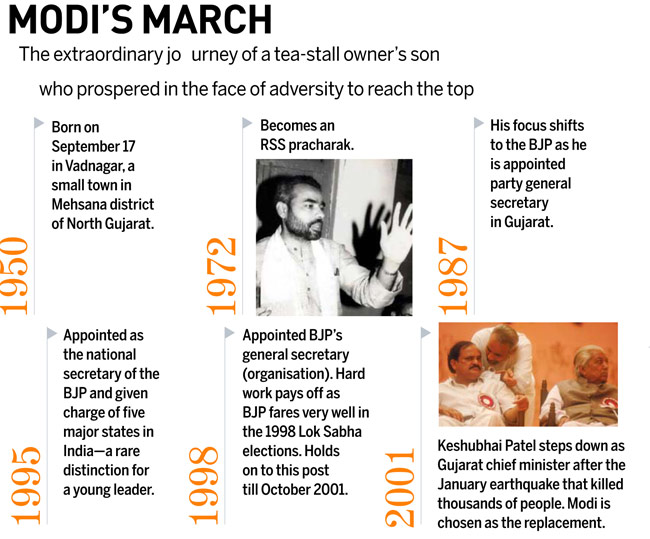


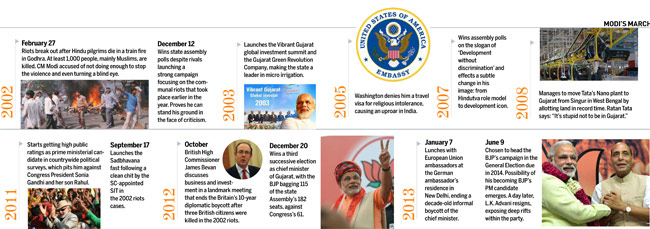
It's the life lessons that he picked up as a man of humble beginnings that will keep Prime Minister Narendra Modi in good stead Narendra Modi may have emerged as a skilful administrator and a man with the flair for marketing his vision with flashy taglines, but his life story is one of easy simplicity peppered with an intermittent but undeniable bohemian streak. His rise from the son of a tea-shop owner to one of India's most powerful prime ministers is not without its share of fascinating anecdotes and incidents that shaped his nowtowering personality.
Born in 1950, Modi grew up in a small three-room house as one of six children of Damodardas Modi, who owned a small tea shop at the railway station in Vadnagar in north Gujarat. A young Modi would help his father at the stall after school and often double up as a delivery boy carrying a metal cup-holder filled with tea glasses.
At Shri B.N. High School in Vadnagar, where he studied until the 11th standard, Modi was recognised as a brilliant student. Not surprisingly, he was the best orator in his class and took part in school dramas- once playing the role of the Maharaja of Bhavnagar. His extracurricular repertoire extended to being a fine NCC cadet. "He was truly multifaceted," says Sudhir Joshi, a classmate who still lives in Vadnagar. Adds Nagji Desai, another classmate with whom Modi used to spend a lot of his free time: "In whatever he did at school, he was always number one."
The five-year period from when he turned 17 was a phase of great turbulence for Modi, and perhaps the part of his life that made the deepest impact on his personality. When he was barely 18, his parents forced him to marry Jashodaben, a girl from his own oil-tiller community, against his wishes.
Apologising to his young wife for not being strong enough to have made the decision earlier, he walked out of his marriage and went to the Himalayas for three months, and then moved to Ahmedabad permanently on his return.
Small beginnings
In Gujarat's biggest city at the end of the 1960s, Modi took up the job of a supervisor in the Gujarat State Road Transport Corporation canteen. Though Modi didn't care much about the kind of food he ate-khichdi and kadhi being his staple-he was always fond of clothes, shoes, and accessories.
Rising through the ranks
Between 22 and 25, Modi worked as pracharak in Sanghrelated bodies and also as a district pracharak. The turning point came when Indira Gandhi imposed Emergency in 1975. Modi stepped forward as a key strategist for the Sangh, remaining underground for several months to help anti-Congress political forces.
Modi's next noticeable contribution was helping the victims of the Morvi dam disaster in 1979. Modi, who was in Chennai when he heard about the dam burst, rushed to the spot within 12 hours and was instrumental in floating a trust for the families of those affected.
In 1986, Modi was transferred to the Gujarat BJP as its organisational secretary. He became a key strategist for the BJP in the state for the Ayodhya Ram Mandir agitation and, in the backdrop of poor relief work by the state government during the 1987-1989 drought, started the Nyaya Yatra with Vaghela to seek justice for drought victims.
Propelled into the limelight as an emerging leader, Modi played a key role in the 1989 Lok Sabha elections and the state Assembly elections in early 1990. The BJP's creditable performance in the two elections firmly established him as a key political and electoral strategist, and even won him a place in the 11-member national election committee of the BJP for the 1991 Lok Sabha polls.
Modi visited the United States at least four times between 1990 and 2000 and spent time with the Indian diaspora. Kanchan Banerjee, a technocrat in Boston at whose house Modi dined on several occasions, gives an example of his love for the latest gizmos: "One time, when my family forced him to accept a gift from us, Modi reluctantly asked for the latest laptop, a version even we weren't even using at home at that time. It was a surprise that he was so well-versed in the latest technology."
Despite being a tough taskmaster, Modi's softer side is visible in his attention to detail as far as the finer points of personal etiquette go. Soon after the 2007 Vibrant Gujarat Summit in Ahmedabad, for example, an aide told Modi that it was a mistake to ask Sanjay Lalbhai of Arvind Mills to sit in the last row on the dais because he was an industrialist of repute and his grandfather Kasturbhai Lalbhai was known as a generous philanthropist. Modi's Principal Secretary K. Kailasnathan immediately sent a letter of apology to Lalbhai, who was pleasantly surprised by the gesture.
A deeper insight into Modi's philosophy can be gathered from his collections of poems Aankh Aa Dhanya Che ("Oh Eye, I am grateful to you"), and Sakshibhaav, a book in which Modi has shared his musings from his diary in the mid-1970s when he had not yet entered politics. But there is also a ruthless streak in Modi, evident in how he crushed all opposition within his own party, first in Gujarat where he was embroiled in a tussle with Keshubhai Patel and Sanjay Joshi, and then at the national stage where he sidelined a reluctant BJP leadership to emerge as the party's prime ministerial candidate in 2013.
With the era of Modi upon us, there will be many hypotheses and expositions on what the Prime Minister's motivations are, and how they have been derived. Be that as it may, it cannot be denied that our Newsmaker of 2014 has led a simple life that could not have been less ordinary.
2006-11: Economic links with China [as CM]
Modi found China when blocked by great visa wall
Kapil Dave,The Times of India May 14, 2015
Prime Minister Narendra Modi's bond with China dates back to his days as the chief minister of Gujarat. China was one of the first countries Modi visited after he was denied visa by the US in 2005. In November 2006, Modi embarked on a five-day trip to China, visiting Beijing and Shanghai apart from the special economic zones in Shenzhen and Pudong.
Among the important MoUs signed during his visit was the one with China Light & Power Company, which has set up a 600MW gas-fired power plant in Paguthan in South Gujarat. The company is planning to establish a 2,000MW coal-fired plant at the same location.
However, many MoUs, such as the one establishing the sister-state relationship with Tianjin province, never took off. Talks of a technical tie-up between the Three Gorges Dam authority and Gujarat's Sardar Sarovar Narmada Nigam did not make much headway either.
Five years later, when Modi visited China again, he was accorded the treatment reserved for heads of state or national government: he was, for instance, received at the Great Hall of People. Travelling with Modi were his favourite bureaucrats like K Kailashnathan (who has been the chief principal secretary in the Gujarat government since his retirement in 2012); and A K Sharma, who is now with the PMO. The delegation also comprised top representatives from Reliance, Essar, Adani, and Shell Hazira.
Since then, China's TBEA has begun operations in the state and plans a Rs 2,500 crore infusion for a Green Energy Park in Karjan near Vadodara.
The China-India Trade and Investment Centre estimates that Chinese companies may invest about $1 billion in sectors like electronics and infrastructure in the coming years. According to industry sources, investment commitments made by Chinese companies in Gujarat is to the tune of around Rs 10,000 crore, most of which was pledged when Modi was the CM. The actual investments could be around Rs 1,000 crore, most of it in the power equipment sector.
In 2011, many MoUs were signed with Chinese entities; most have not materialized. These plans included: telecom giant Huawei setting up a manufacturing base in the state; and a tie-up between Shanghai Institute for Contemporary Development Studies for International Enterprises and a university in Gujarat. The state wanted to consult the Shanghai (Yangshan) Deep Water Port authority for technological options for the Kalpasar Project, but progress hasn't been achieved. Gujarat is a heavyweight in the port sector and has immense potential.
2014: General Elections
Winning India was an extraordinary achievement. A new book reminds us how Narendra Modi did it.
Kaveree Bamzai
March 27, 2015
Lance Price has written the definitive account of the campaign that got Modi to where he is now, friend of Barack and Bibi, mentor-in-residence of a young nation, and custodian-in-chief of an emerging alternative narrative of the past. Much of what he tells us is known to most journalists who reported or researched the 2014 General Election-the use of social media, the debut of 3D technology, the support of gurus such as Baba Ramdev and Sri Sri Ravi Shankar. But the star of the book, as of the campaign, is Modi, as he tirelessly recounts the relentless campaign to Price with complete lack of irony about either referring to himself in the third person or recalling his God-given gifts (among them being a sense of style).
Key learnings
Pay attention to details
Piyush Pandey talks of how Modi was his art director, often stepping in to suggest colours and designs. Nothing was too minor for Candidate Modi to pay attention to. The theme was clear and best articulated by Modi: "My campaign had to be national but my appeal had to be local to the people."
Delegate to the right people
Because Modi could not use the party machinery, he put together a collection of bright, young, committed professionals, ranging from IT specialists Hiren Joshi and Prashant Kishor to admen Piyush Pandey and Prasoon Joshi, who worked tirelessly for him.
Allow for experiments
The 'Chai pe Charcha' was abandoned after the first three times, while the 3D technology was tried a few times before it was perfected.
Never miss an opportunity to attack
The 2014 campaign was marked by the Congress handing Modi a series of prize catches-from Rahul Gandhi's toffee remark to Priyanka Gandhi's comment about neech rajniti to Manmohan Singh's achche din remark at his last press conference as prime minister. Modi didn't miss a single trick.
Never give up
As Price notes, Modi had to mount a three-step campaign-to win Gujarat in 2012, win over his party in 2013 and then India in 2014. It required patience, dedication, and never losing faith, not just on Modi's part but also on the part of all his followers. They managed because they didn't drop the ball even once.
Go big With Modi, says an aide to Price, everything had to be the biggest, the boldest, the best. Nothing less would do.
Price gives us a ringside view of Modi's way of working: how he checks his email first thing in the morning and the last thing at night. He tells us of Modi's two favourite responses to criticism-Congress lies and media distortion, in that order. He even settles the debate on how much, or how little, Modi sleeps-it is five hours.
It is when Price is analysing the future of the government that he is at his best. He quotes Arun Shourie as saying that the government had better start performing if it has to endure: "You need to act on what Buddha said: Live each day like your hair is on fire." And indeed, though Modi seems in no hurry, India is. It's when you read Price that you remember what an extraordinary campaign Modi launched to win India. Now he has to unleash similar forces for India to win the world. Or as Mario Cuomo said so famously: you campaign in poetry, you govern in prose.
NDA government (2014- )
Obsolete laws repealed
The Times of India, May 19 2016
Vishwa Mohan
The Narendra Modi government may be facing the opposition hurdle in Rajya Sabha in enacting certain new laws, but its record of getting obsolete and redundant laws out of the statute book appears to be moving ahead without too much fuss.
Successive governments had repealed 1,301 such outdated laws in 64 years. But the present government has managed to weed out as many as 1,159 obsolete laws in less than two years.
Obviously , the oppositiondominated Upper House too had played its part when it passed those bills concerning repeal of the 1,159 central laws, including two dozen of them from the British era, that had lost relevance long ago due to enactment of other related laws, incorporating provisions of the earlier Acts, over the years.
RS had passed two such bills, repealing 1,053 Acts, during the recently concluded Budget session. While the passing of one -Appropriation Acts (Repeal) Bill 2015 -could repeal 758 old appropriation acts, the other one -Repealing and Amending (Third) Bill, 2015 -could weed out the other 295 Acts.
Laws on licence to kill and capture of wild elephants in certain circumstances, segregation and medical treatment of lepers, regulating the grant of titles to qualified persons in western medical science, prohibition of pledging of labour of children (child slavery), regulating recruitments of foreigners during pre-Independence period, agreement with Pakistan on exchange of prisoners, continuation of use of courts in Bengal, Assam and Punjab for those who migrated to Pakistan and power to regulate prices of newspapers are among others Acts which have been repealed.
There had been many more laws in the statute books which had been of no use as provisions of most of the old Acts had already been incorporated in new legislations.
Image recast in the USA
The Times of India, June 9, 2016
Displaying an unsentimental, hard-headed selfinterest, PM Modi wasted no time in visiting the US after assuming office, putting aside previous controversies as he grasped the importance of the bilateral relationship -and the potential for some smart image management. Not unlike his predecessor Manmohan Singh, the new PM understood that much of India's aspirations for a global role as an economic and military power would remain unfulfilled without accessing US technology and finance.
Modi managed to hit it off with US President Obama -a feat that still puzzles many (New York Times called it the most unlikely friendship Obama could have struck with any world leader) -and this was crucial to lifting ties.
The bemusement is in good measure due to the alleged contrast between Obama's commitment to minority rights and dissent and Modi's purported moorings in the “rightwing paramilitary“. But Modi side-stepped stereotypes and connected with Obama on issues like climate change and China and leveraged his big parliamentary majority .
An oped in the Washington Post last year declared that trade, investment and technology would be the bedrock of a partnership for the 21st century to harmonise India's ambitious development agenda while sustaining US growth.
In his first visit, Modi used the Madison Square event to tap overseas Indian sentiment and the enthusiastic reception was duly noted by global media. It was an effective strategy to counter activists raising human rights issues.
The PM's warm relationship with Obama was crucial for his plans to push Indian interests ranging from Pakistan, China, technology , investments, defence, climate change to admission to the NSG.
Bilateral ties with China would always be difficult, not the least because economic and military muscle gave the Chinese a sense of superiority. The US was essential to India's efforts to seek a more eq uitable deal from China.
Years of tough sanctions related to dual use technology had hurt Indian science and industry with even improving monsoon predictions becoming a labourious task in the absence of sophisticated computers and satellite data.
The relationship gained momentum under Manmohan Singh with the nuclear deal being concluded during UPA-1, but ties lost steam in his second term.
Though his win in the 2014 Lok Sabha elections -and the decimation of Congress -gave him huge legitimacy , Modi still needed to shake off the shadow the Gujarat riots cast on his career at home and more particularly abroad. Four visits to the US have helped him do that in large measure.

